Intersection priorities help the user control interactions between certain elements. Wall and beam elements have their own intersection priority; I'm calling that the element priority. Composite skins (and components of custom profiles) have their own intersection priorities. Those are skin priorities. Neither of these should be confused with the intersection group number property of layers, though that bears on intersections too!
Element priorities effect plan and 3D geometry. Skin priorities effect only plan. Managing skin priorities is the key to proper automatic joint cleanup between composite walls in plan. Here's a look at the essentials of skin priorities and our standard composite setup.
First, for skin priorities to work these conditions must be met:
• The intersection group number of the walls' layers must match.
• Reference lines of walls must meet.
These conditions are all old requirements for wall cleanup in Archicad. Skin priorities are intended to help graphically refine well-modeled intersections.
Element and skin priority numbers range from zero to sixteen. Walls and wall skins use even numbers, while beams take the odds.
Priorities determine how skins meet. Fill names determine if skins clean up.
Skins with matching numbers meet each other, and will clean up if the fill names match.
Higher numbers override lower numbers. A skin will cross lower priority skins, and butt into higher priority skins.
Simple walls (no composite) still have an element priority. They should be set to properly interact with composite skins that they meet.
Skin priorities are ignored in 3D. Element priorities will determine the interactions of beams and walls. Therefore, composite walls need the proper element priority too.
It does not matter where the reference lines are, as long as they meet.
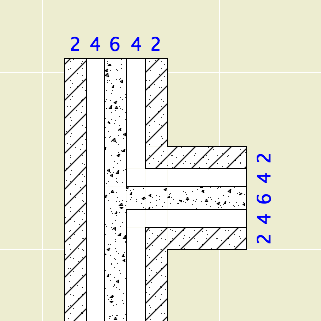
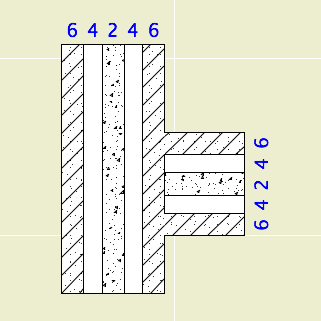
Priorities inside-out
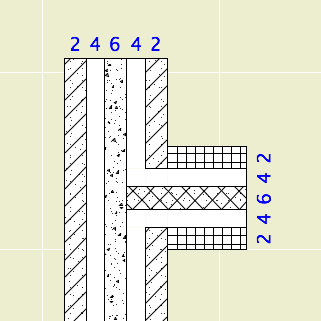
Meeting but not cleaning up
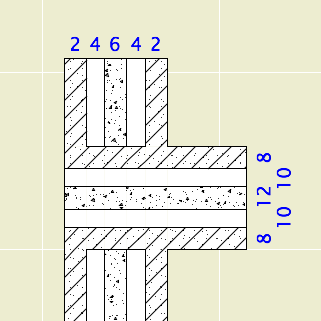
Matching names always clean up
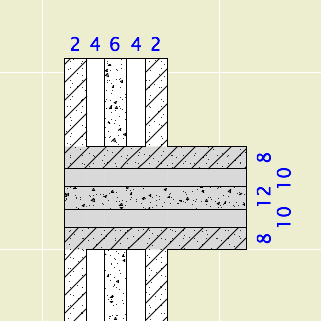
Background pen override
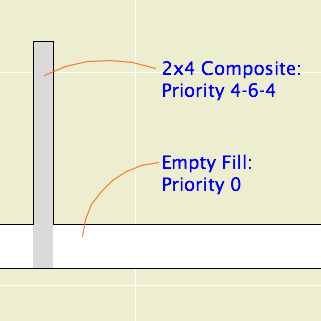
Bad existing wall
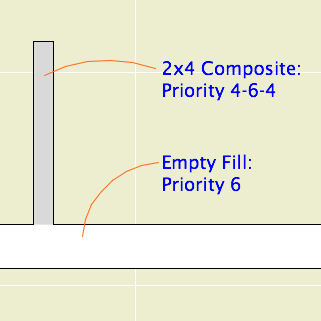
Good existing wall
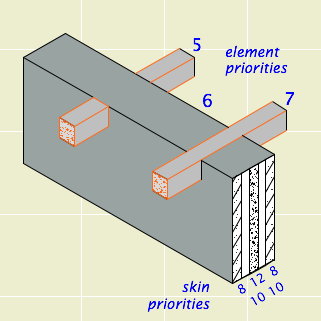
Element priorities in 3D
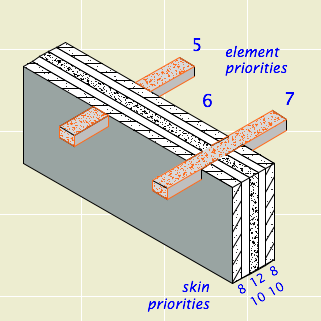
Matching names always clean up
Generally, inner skins should have higher numbers than outer skins.
4 Drywall/Sheathing/Airspace Empty
6 Stud Space Empty
10 Masonry veneer
12 Concrete
And we have some space for expansion.
Stud wall framing follows a pattern of 4-6-4; Drywall/stud/[drywall or sheathing]
Veneer on CMU or concrete follows a pattern of 12-4-10; CMU/Air/Veneer
In existing construction, walls without composite applied (Empty Fill) should have priority 6, to cooperate with 2x_ composites.
See also: Composites: Why, How
